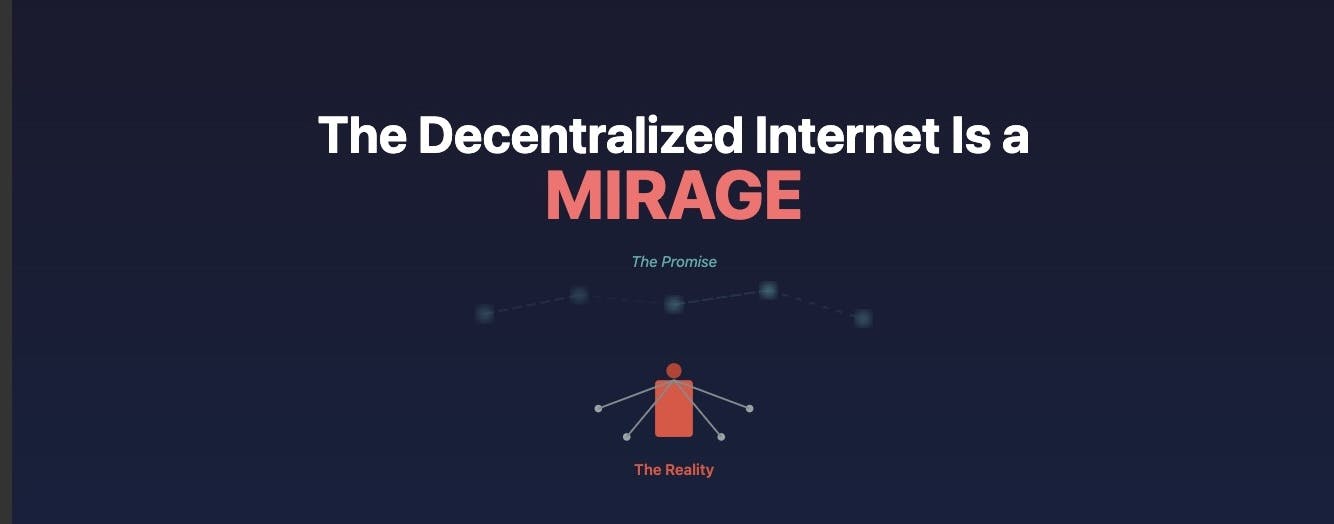A DeFi Ecosystem Comparison – CryptoMode

The decentralized finance (DeFi) landscape is rapidly evolving, with numerous blockchain platforms vying for dominance. Among the prominent contenders are Avalanche and Solana, both offering high-performance alternatives to established networks like Ethereum.
This article provides an educational comparison of Avalanche and Solana’s DeFi ecosystems, highlighting their core technologies, architectural differences, and their respective approaches to decentralized finance.
Avalanche: The Platform of Subnets
Avalanche is a highly scalable and programmable smart contract platform designed for decentralized applications (dApps) and custom blockchain networks. Its unique architecture is built around three interoperable blockchains, each serving a distinct purpose within the Avalanche ecosystem.
Core Architecture: The Three Chains
- Exchange Chain (X-Chain): This chain is used for creating, managing, and exchanging digital assets. It facilitates instant transactions and asset transfers. Addresses on the X-Chain begin with “X-avax”.
- Platform Chain (P-Chain): The P-Chain coordinates validators, tracks active subnets, and allows for the creation of new subnets. It is crucial for staking AVAX (Avalanche’s native token) and receiving staking rewards. P-Chain addresses start with “P-avax”.
- Contract Chain (C-Chain): This is an instance of the Ethereum Virtual Machine (EVM) and is fully compatible with Ethereum tooling. The C-Chain is where most DeFi activities and smart contracts on Avalanche are deployed and executed. Its compatibility with EVM makes it easy for developers to migrate existing Ethereum dApps or build new ones using familiar tools.
Consensus Mechanism: Avalanche Consensus
Avalanche employs a novel consensus protocol known as Avalanche Consensus, which combines elements of classical and Nakamoto consensus mechanisms. It is characterized by high throughput, fast finality (sub-second transaction confirmation), and energy efficiency.
Unlike traditional Proof-of-Work (PoW) or even some Proof-of-Stake (PoS) systems, Avalanche Consensus operates through repeated sub-sampled voting. When a node needs to validate a transaction, it queries a small, random subset of other validator nodes for their preference.
If a sufficient majority agrees, the inquiring node adopts that preference. This process repeats until a high confidence threshold is met, leading to rapid and secure transaction finalization. This probabilistic approach ensures adaptive security against various attacks.
DeFi Ecosystem on Avalanche
The C-Chain’s EVM compatibility has attracted a diverse range of DeFi projects, including decentralized exchanges (DEXs) like Trader Joe and Pangolin, lending protocols such as Aave and Benqi, and various yield farming opportunities.
The Avalanche network also supports the creation of custom blockchains called Subnets, which can have their own rules, tokens, and even custom virtual machines. This flexibility allows for highly specialized and scalable DeFi applications, catering to specific use cases or enterprise needs.
Solana: The High-Throughput Monolithic Blockchain
Solana is a high-performance blockchain designed to support decentralized applications and crypto projects that require massive throughput and low transaction costs. It distinguishes itself with a monolithic architecture, aiming to scale without sharding.
Core Architecture: Single Global State
Unlike Avalanche’s multi-chain approach, Solana operates as a single blockchain with a unified global state. This design choice aims to simplify development and maintain composability across all applications on the network. Solana achieves its high performance through a suite of innovative technologies, with Proof of History (PoH) being a cornerstone.
Consensus Mechanism: Proof of History (PoH) and Proof of Stake
Solana’s consensus mechanism is a hybrid model that primarily uses Proof of Stake (PoS) for security and Proof of History (PoH) as a cryptographic clock to order transactions efficiently.
Proof of History (PoH) is not a consensus mechanism in itself but a verifiable delay function (VDF) that creates a historical record of events. It allows validators to cryptographically prove the passage of time between events without relying on a centralized timestamp.
This pre-consensus mechanism streamlines the PoS process by providing a verifiable order of events, allowing for parallel processing of transactions. In essence, PoH works by continuously hashing a sequence of data, with each hash depending on the previous one. This creates a verifiable sequence of events, a cryptographic timestamp, that validators can use to agree on the order of transactions without constant communication.
This significantly reduces the overhead typically associated with distributed consensus and enables Solana to achieve exceptionally high transaction speeds and low latency.
DeFi Ecosystem on Solana
Solana’s high throughput and low transaction fees have fostered a vibrant DeFi ecosystem. Key projects include decentralized exchanges (DEXs) like Raydium and Orca, lending protocols such as Solend and Marginfi, and various staking and yield aggregation platforms.
The network’s ability to handle a large volume of transactions makes it particularly suitable for applications requiring real-time interactions, such as high-frequency trading and gaming. Solana also boasts a strong developer community and a growing number of stablecoins and wrapped assets.
Key Differences and Comparison
While both Avalanche and Solana aim to provide scalable and efficient platforms for DeFi, they approach this goal with distinct architectural philosophies and consensus mechanisms. The table below summarizes some key differences:
|
Feature |
Avalanche |
Solana |
|
Architecture |
Multi-chain (X-Chain, P-Chain, C-Chain) |
Monolithic (Single Global State) |
|
Scalability |
Achieved through Subnets |
Achieved through PoH and parallel processing |
|
Consensus |
Avalanche Consensus (sub-sampled voting) |
Proof of History + Proof of Stake |
|
EVM Compatibility |
Yes (C-Chain) |
No (uses Solana Virtual Machine – SVM) |
|
Transaction Speed |
High (sub-second finality) |
Very High (tens of thousands TPS) |
|
Transaction Costs |
Low |
Very Low (fractions of a cent) |
|
Primary Use Case |
Customizable blockchains (Subnets), dApp deployment |
High-frequency applications, gaming, real-time DeFi |
Architectural Approach
Avalanche’s multi-chain architecture, particularly its C-Chain and Subnets, offers flexibility and customization. The C-Chain provides seamless compatibility for Ethereum developers, allowing for easy migration of existing dApps.
Subnets enable projects to launch application-specific blockchains with tailored functionalities, potentially reducing congestion on the primary network and offering sovereign control over their ecosystems.
This modularity can lead to a highly specialized and diverse DeFi landscape. Solana, on the other hand, opts for a monolithic design, where all applications reside on a single blockchain. This approach prioritizes a unified global state and composability, meaning all dApps can interact seamlessly without cross-chain complexities.
Its innovative PoH mechanism, coupled with a highly optimized Proof of Stake, allows it to achieve unparalleled transaction speeds and throughput on a single chain, making it ideal for applications demanding extreme performance.
Consensus and Finality
The Avalanche Consensus mechanism is a novel approach that uses repeated sub-sampled voting to achieve rapid finality. It’s designed to be lightweight and efficient, allowing for quick agreement among validators. This probabilistic finality quickly converges to absolute finality, offering a strong security guarantee.
Solana’s combination of Proof of History and Proof of Stake provides a unique way to order transactions and achieve consensus. PoH acts as a verifiable clock, ensuring that validators agree on the sequence of events before they are even processed by the PoS consensus. This pre-ordering significantly speeds up the consensus process, contributing to Solana’s high transaction per second (TPS) capabilities.
Developer Experience and Ecosystem
Avalanche’s C-Chain, being EVM-compatible, offers a familiar development environment for a large pool of Ethereum developers. This lowers the barrier to entry and facilitates the porting of existing dApps.
The Subnet model also provides developers with the freedom to design custom blockchain environments. Solana uses its own runtime, the Solana Virtual Machine (SVM), and primarily supports Rust for smart contract development.
While this requires developers to learn a new environment, Rust offers performance advantages. Solana’s focus on a single, high-performance chain means developers can build without worrying about cross-chain bridges or complex interoperability solutions within the ecosystem.
Conclusion
Both Avalanche and Solana represent significant advancements in blockchain technology, each offering compelling solutions for the challenges of decentralized finance. Avalanche provides a flexible, modular architecture with strong EVM compatibility and the power of custom Subnets, appealing to projects seeking tailored blockchain environments.
Solana, with its monolithic design and groundbreaking Proof of History, delivers exceptional speed and throughput, making it suitable for high-performance, real-time applications. The choice between Avalanche and Solana often depends on the specific needs of a DeFi project.
Developers prioritizing EVM compatibility, modularity, and custom blockchain solutions might lean towards Avalanche. Conversely, projects requiring maximum transaction speed, low fees, and a unified global state for highly interactive applications might find Solana more appealing. As the DeFi space continues to mature, both platforms are poised to play crucial roles in shaping its future.





